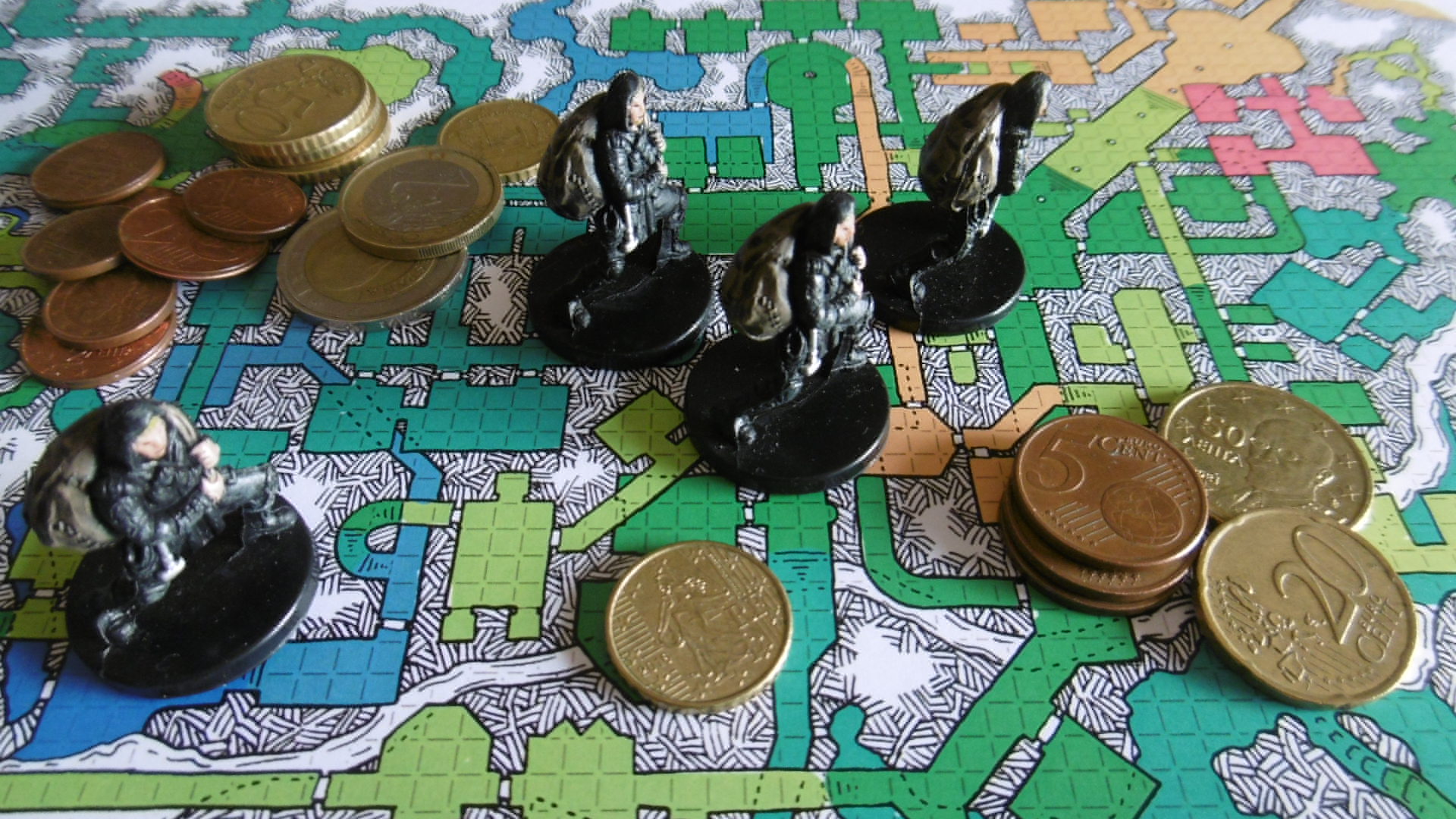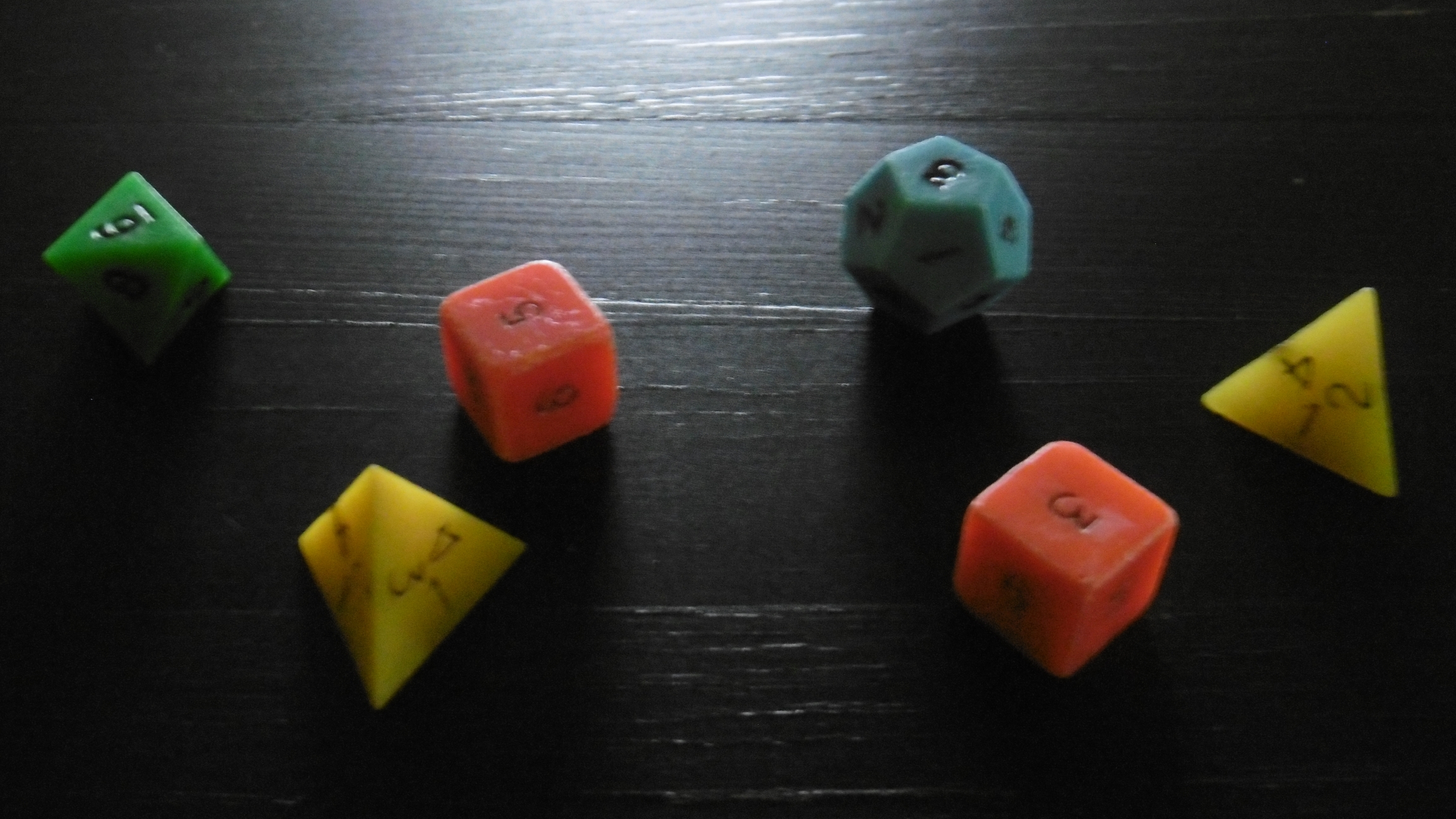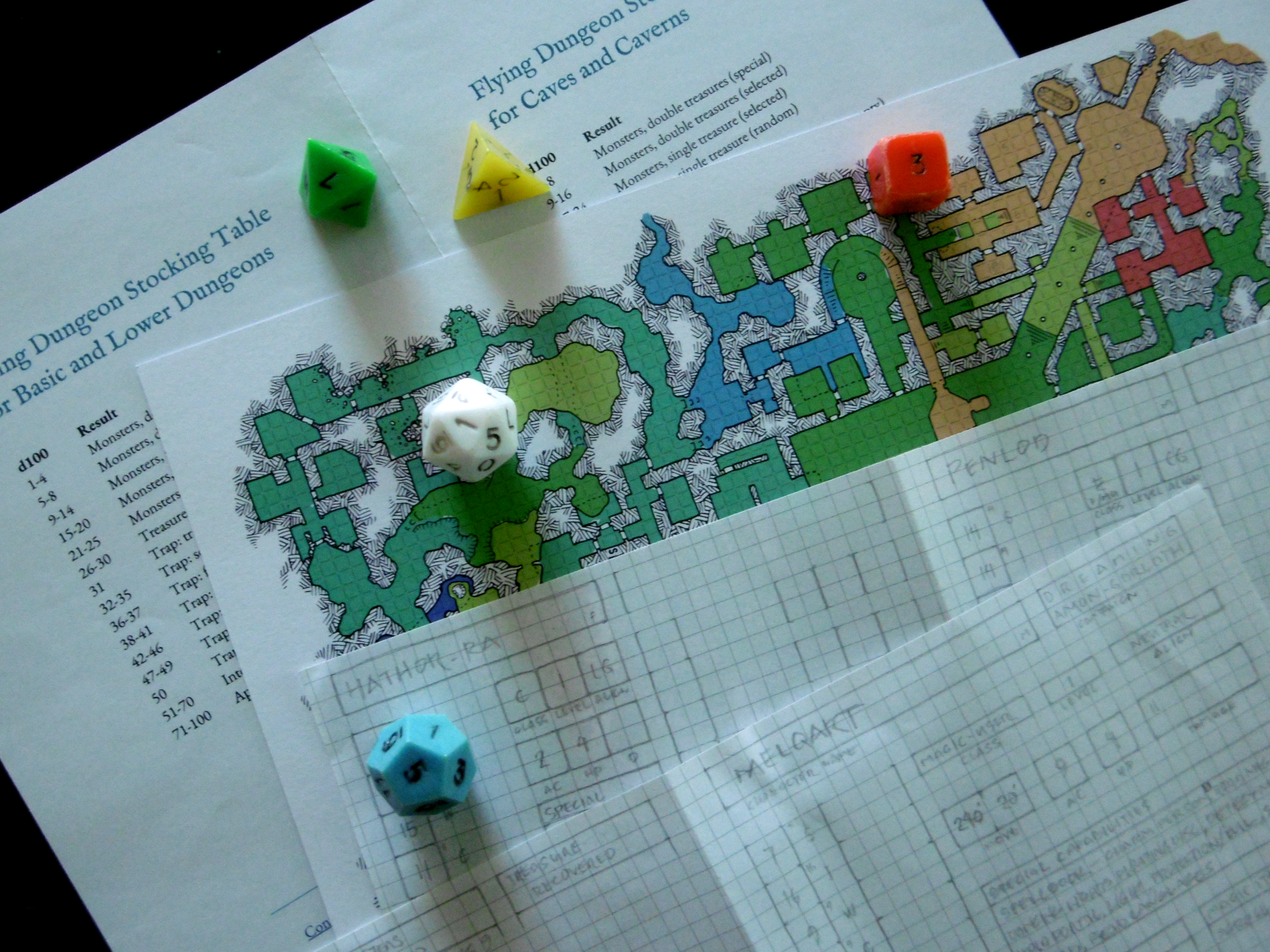The Frieze, the Papyrus, the Spitting Cobra
The scene continues from the opening of “Holmes on a Coin’s Weight.”
Melqart and Hathor-Ra loaded treasure. The medium held a sack open at the hem, while the acolyte dumped the contents of an iron coffer into it. Gold coins rattled and clinked, like a stream of metallic pebbles.
Plate-armored Iltani, with sword and shield, stood over a sharper. The thief, bloody hands bound and tethered to an ankle, crouched beside a wall. The charmed harpy fed on three others in the room beyond a door, which was guarded by Zagros, also armor-clad with sword and shield.
The party’s own thief, Idan Thyrsus, lay face down. A dagger protruded from between shoulder blades.
Coins sacked, Melqart and Hathor strung necklaces around their necks, sequestering the jewels beneath robe and tunic.
Iltani, Zagros, and the hobbled sharper would each carry a large sack, Melqart a small. Hathor, otherwise unburdened, would port the corpse of Thyrsus back to base town, where she hired him the previous day.
“Wait,” said Melqart. “Where’s the papyrus?”
Hathor raised her eyebrows. “The oneiromancer said it would be in this room.”
“Maybe here…” Melqart approached the frieze, pushing aside an empty coffer with a foot.
The frieze covered the wall up to fifteen feet high under the barrel-vaulted ceiling. A line of life-size human figures, one foot before another, faced a larger figure, seated on the left. The upright figures were male and female. Males were bare chested, wearing only kilts. Females wore long gowns to the ankle. All were barefoot and held some object in both hands before them: the first a scroll, the second a tall jar, followed by a cornucopia, a jug, a bowl, and so on. The seated figure, male, wore a kilt. Two concentric circles haloed the head. Straight lines, like rays, protruded from the outermost.
Hathor stepped closer with the torch. Melqart felt the relief with fingertips, tracing outlines in smooth alabaster.
“It’s a procession,” said the cleric. “Subjects bring offerings. The king’s halo represents Gor’s double crown.”
“I don’t see any—” Melqart’s fingers slipped over the lip of the tall jar. “What’s this?” He rapped on the jar with a knuckle. It rang hollow.
Melqart gripped the jar by the lip and held it at the base. A tug revealed a crack between jar and relief. Wiggling the jar from side to side, he pulled, and it gave.
“Give me a hand,” said the magic-user.
Hathor lay the torch on the floor. Shadows leapt high up the wall. Together they pulled the jar from the niche and set it down on the floor.
Hathor went for the torch. Melqart stood up to peer inside the jar. From the shadow within, a cobra’s head raised to meet his gaze. Its hood spread, black eyes glinted, and it spat into Melqart’s face.
The medium recoiled with a grunt. Hathor struck out at the snake. The mace came down hard on the jar lip.
The cobra spilled from broken alabaster, coiling its three-foot length. Iltani and Zagros advanced from either side. The serpent soon writhed in two parts.
“Are you well, Melqart?” said Hathor.
Melqart blinked his eyes, opening wide. “I can’t see.”
The blind Melqart and the hobbled sharper in tow, the limp Thyrsus over a shoulder, Hathor-Ra led the party up to the dungeon’s first level. There, she rendered the papyrus, a rolled page with magical writing on it found in the jar, to the witch who called herself an oneiromancer.

Sharpers (7th-level thieves) hideout on the dungeon’s 3rd level. A spitting cobra guards a papyrus concealed within an alabaster frieze.





![Single Dice Roll [Traditional] Single Dice Roll [Traditional]](https://www.donjonlands.com/wp-content/uploads/_images/legacy/6a00d8342106f153ef02942f905f3b200c.jpg)





